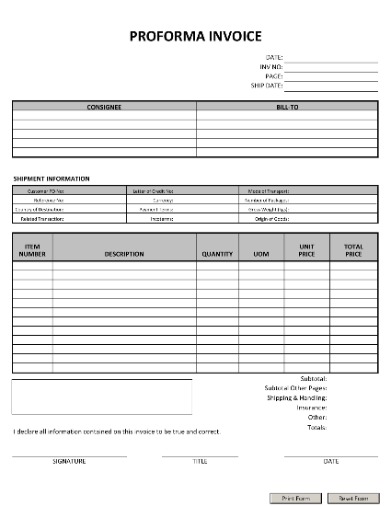Content
A progressive tax system means that tax rates increase as your taxable income goes up and your income enters a higher tax bracket. This has you pay a greater rate of tax on each successive chunk of income. Each chunk of income—income in a tax bracket—shows the percentage of tax you pay on that portion of your income. This means whichever tax bracket you’re “in”, its rate won’t apply to your entire income unless your taxable income ends in the lowest bracket.

It’s important to be aware of any changes that the IRS makes to file your taxes properly and avoid overpayment or underpayment. While it’s likely you will pay income tax at various rates or tax brackets, the actual percentage of your taxable income that goes to the IRS is referred to as your effective tax rate. Your last dollar of taxable income gets taxed at your highest marginal income tax rate, which is generally higher than your effective tax rate.
Tax Brackets
For married couples filing jointly, the phaseout of the credit begins at $26,260 of adjusted gross income (or earned income, if higher). The first thing you need to know about federal tax brackets and income tax rates is that there are seven federal income tax rates. The federal tax rates typically don’t change unless Congress passes major tax legislation. For example, the Tax Cuts and Jobs Act of 2017 (sometimes known as the “Trump tax cuts”) lowered the top tax rate to 37% until 2025, when that rate is scheduled to revert to 39.6%).

This is the headache-inducing beauty of the American system of marginal rates. In partnership with your tax professional, an Ameriprise financial advisor can help manage the impact of taxes on your financial goals. When you look at your paycheck, you can see taxes that are taken out of your take-home pay for various reasons.
Other Taxable Income
Qualified Dividends–These are taxed at the same rate as long-term capital gains, lower than that of ordinary dividends. There are many stringent measures in place for dividends to be legally defined as qualified. Keep in mind that most taxpayers don’t itemize their deductions. If the standard deduction is larger than the sum of your itemized deductions (as it is for many taxpayers), you’ll receive the standard deduction. The standard deduction is a flat dollar amount that reduces the amount of your income that’s subject to tax.
- Our editorial team receives no direct compensation from advertisers, and our content is thoroughly fact-checked to ensure accuracy.
- Making regular contributions to a registered charity or nonprofit?
- However, ordinary tax rates don’t apply to every type of income.
- Previously he was a reporter for Kiplinger’s Personal Finance and USA Today.
Broadly, this means that the government decides how much tax you owe by dividing your taxable income into chunks — also known as tax brackets — and each chunk gets taxed at the corresponding tax rate. The progressive tax system also means that people with higher taxable incomes are subject to higher federal income tax rates, and people with lower taxable incomes are subject to lower federal income tax rates. The beauty of tax brackets is that no matter which bracket you’re in, you won’t pay that tax rate on your entire income. Saver’s Credit–Non-refundable credit incentivizes low and moderate-income taxpayers to make retirement contributions to qualified retirement accounts. 50%, 30%, or 10% of retirement account contributions up to $2,000 ($4,000 if married filing jointly) can be credited, depending on adjusted gross income.
The basics on federal income tax rates
Adding two percentage points results in the annual Department rate of 6.0 percent. The monthly rate is the annual rate divided by 12, rounded to the nearest one-tenth of a percentage point. John Waggoner covers all things financial for AARP, from budgeting and taxes to retirement planning and Social Security. Previously he was a reporter for Kiplinger’s Personal Finance and USA Today. The IRS uses the chained consumer price index (CPI) to measure inflation, as mandated by the 2017 tax reform. Like the more well-known consumer price index, the chained CPI measures price changes in about 80,000 items.
- Generally, only taxpayers with adjusted gross incomes that exceed the exemption should worry about the AMT.
- Knowing your tax bracket and your effective tax rate can be the first steps to lowering your taxable income and lowering your tax.
- The United States operates under a progressive tax code, which means — all things being equal — the more you earn, the more income taxes you owe.
- However, the IRS allows the deduction of certain costs that can reduce tax bills.
- The insights and quality services we deliver help build trust and confidence in the capital markets and in economies the world over.
- Residential Energy Credit–Residential properties powered by solar, wind, geothermal, or fuel-cell technology can qualify.
- This means that because they are not considered employees, they are responsible for their own federal payroll taxes (also known as self-employment tax).
These adjustments can help prevent taxpayers from ending up in a higher tax bracket as their cost of living rises. The tax bracket adjustments can also lower taxes for those whose compensation has not kept up with inflation. American Opportunity Credit–Generally for qualified education expenses paid for an eligible What Is My Tax Bracket? 2021 student in their first four years of higher education. If the credit brings tax liability down to $0, 40% of the remainder (up to $1,000) can be refunded. BTL deductions refer to the Standard Deduction or Itemized Deductions from Schedule A. A BTL deduction is always limited to the amount of the actual deduction.
Tax credits are only awarded in certain circumstances, however. Some credits are refundable, which means you can receive payment for them even if you don’t owe any income tax. By contrast, nonrefundable tax credits can reduce your liability no lower than zero. The list below describes the most common federal income tax credits. Importantly, your highest tax bracket doesn’t reflect how much you pay in federal income taxes.

Get this delivered to your inbox, and more info about our products and services. This chart shows estimates of how much of your income would be taxed at each rate. Profit and prosper with the best of expert advice on investing, taxes, retirement, personal finance and more – straight to your e-mail. The maximum salary reduction for contributions to health flexible spending accounts (FSAs) is $2,850 for 2022. The maximum carryover of unused amounts for cafeteria plans is $570 for 2022.
How income tax brackets work
For example, if you’re a single filer in 2023 with $35,000 of taxable income, you would be in the 12% tax bracket. If your taxable income went up by $1, you would pay 12% on that extra dollar, too. Due to the complexity of income tax calculations, our https://kelleysbookkeeping.com/ Income Tax Calculator only includes input fields for certain tax credits for the sake of simplicity. However, it is possible to enter these manually in the “Other” field. Just be sure to arrive at correct figures for each tax credit using IRS rules.
Meanwhile, the 12% bracket will apply to incomes over $9,950 for single taxpayers ($19,900 for married filing jointly). For 2021, the top tax rate of 37% will apply to individual taxpayers with income over $523,600 ($628,300 for married filing jointly). Tax bracket ranges also differ depending on your filing status. For example, for 2023, the 22% tax bracket range for single filers is $44,726 to $95,375, while the same rate applies to head-of-household filers with taxable income from $59,851 to $95,350. The United States operates under a progressive tax code, which means — all things being equal — the more you earn, the more income taxes you owe.
The cheapest way to pay a tax bill is still via a check or via IRS Direct Pay, which allows you to pay your bill directly from a savings or checking account. All major tax filing services will provide you with instructions for both of these payment options. There are numerous other credits, including credits for the installation of energy-efficient equipment, a credit for foreign taxes paid and a credit for health insurance payments in some situations. Both 1099 workers and W-2 employees must pay FICA taxes for Social Security and Medicare. But, whereas W-2 employees split the combined FICA tax rate of 15.3% with their employers, 1099 workers are responsible for the entire amount. Independent contractors, unlike W-2 employees, will not have any federal tax deducted from their pay.